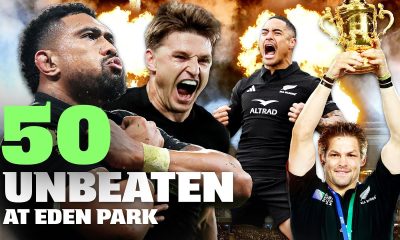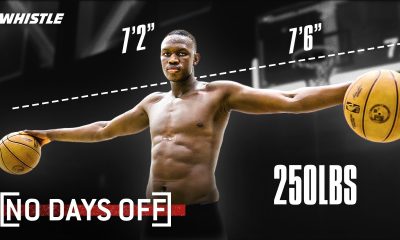NIL
CHSN may need to think outside the Comcast cable box



Six months after the Chicago Sports Network launched, the inaugural Bulls and Blackhawks campaigns are over, the White Sox are 19 games into a new season and the channel remains blacked out for one million Chicago-area Comcast subscribers.
While there are other ways to watch the nascent network, including competing pay-TV providers, streaming services and over-the-air TV, at least one sports industry expert believes CHSN and the White Sox may need to think outside the cable box this summer to stay relevant.
“They may need to put some games on WGN or some other over-the-air channels,” said Marc Ganis, a Chicago-based sports marketing consultant. “And then you sell commercial time and see if maybe the White Sox can get some traction in the marketplace based on simply being on free TV.”
CHSN is broadcast over-the-air in Chicago on the digital subchannels of WJYS-Ch. 62, but viewers need to buy an add-on antenna to get the programming. Ganis believes running some games on a mainstream Chicago TV station such as WGN, which previously carried the Cubs, Sox, Bulls and Blackhawks, would provide broader distribution and the opportunity for cross-promotion to get CHSN off the ground.
A report in the Chicago Sun-Times Friday suggested that WGN-TV is open to a deal with CHSN. Spokespersons for the TV station and the regional sports network declined to comment.
A joint venture between the Sox, Bulls, Blackhawks and Nashville, Tennessee-based Standard Media, CHSN went live Oct.1 on pay-TV platforms DirecTV and Astound, and over the air on WJYS-Ch. 62. It subsequently added streaming service FuboTV and its own direct-to-consumer streaming app, but has yet to strike a deal with Comcast, the market’s largest pay-TV provider.
Comcast was a partner in the predecessor NBC Sports Chicago, the regional sports network which ended a 20-year run in September at the conclusion of a White Sox season that saw the team set an MLB record for losses.
A Comcast spokesperson said in an email Thursday the cable giant is “continuing to have discussions” with CHSN but had no updates to share.
Sources familiar with the negotiations said Comcast is looking to move both CHSN and Marquee Sports Network, the pay-TV home of the Cubs, to its more expensive Ultimate tier, something it has done with other regional sports networks across the U.S. in recent months.
Marquee, which launched in 2020, has remained on Comcast through a series of short-term extensions after its inaugural carriage agreement expired Sept. 30. A Marquee spokesperson did not return a request for comment this week.
Column: Free TV could be the poison pill in the Chicago Sports Network’s impasse with Comcast — and a deal may take awhile
The Ultimate tier costs an additional $20 per month — on top of the $20.25 regional sports network fee Comcast charges Chicago-area subscribers each month. Comcast has been issuing a monthly $8.85 credit to partially offset that fee during the ongoing carriage negotiations with CHSN.
A similar battle had been playing out in New York, where Comcast threatened to black out the Yankees’ YES network before opening day as it looked to move the broadcasts to its Ultimate tier. The Federal Communications Commission weighed in and an agreement was reached to keep the YES network on Comcast’s basic tier, at least for now.
Last week, Jerry Reinsdorf, chairman of the White Sox and Bulls, made a visit to FCC Chairman Brendan Carr, ostensibly to lobby for government help in getting CHSN on the air with Comcast in Chicago.
Ganis said CHSN and the White Sox have a lot less leverage than YES and the Yankees, who have a winning tradition, a larger fan base and big TV ratings.
“The big difference is how many people watch Yankee games in New York — it’s hundreds of thousands,” Ganis said. “It’s very different than the number of people who watch White Sox games in Chicago, even when they were on Comcast.”
Last year, when the White Sox lost a record 121 games, the TV audience during the team’s final season on NBC Sports Chicago shrank to a fractional .7 rating, according to Nielsen data. Sox games averaged a 1.0 rating in 2023 and 1.7 rating the previous year.
For comparison, the Cubs averaged a 4.5 rating on NBC Sports Chicago during the team’s championship season in 2016.
CHSN has yet to provide TV ratings for the inaugural Bulls, Hawks and Sox seasons.
Ganis suggested Comcast can afford to play hardball with CHSN on carriage negotiations because the three teams on the network do not necessarily make for must-see TV.
The Hawks missed the playoffs and the young Bulls fell flat in their play-in game Wednesday against the Heat and also missed the playoffs. And the White Sox, off to a dismal start to the new season, are actually on pace to set a new record for futility.
Meanwhile, one million Chicago-area Comcast subscribers who didn’t cut the cord, switch pay-TV providers or buy an antenna, may have missed the entire Bulls and Blackhawks seasons, with the new White Sox campaign slipping away by the day.
“It’s bad timing for all three teams to be in the valley of their success cycles,” Ganis said. “Maybe one of the ways they can break that paradigm is to add visibility by putting a lot of the games on free television.”
rchannick@chicagotribune.com
Originally Published:
NIL
Cody Campbell, Joey McGuire built Red Raiders into Big 12 champs
Updated Dec. 6, 2025, 3:40 p.m. ET
- Texas Tech’s football success is attributed to head coach Joey McGuire, who brings a high school coaching mentality to the program.
- The team, built with significant financial backing from boosters, has become a national contender by acquiring key players through the transfer portal.
- McGuire has successfully managed a roster of high-profile transfers, creating a unified and disciplined team.
This story was originally published Nov. 8, 2025. On Dec. 6, Texas Tech won the Big 12 Championship securing its place in the 2025 College Football Playoff.
LUBBOCK, TX – Lost here in the wild well blowout of cash, ground zero for the excess of big money college football, is a high school football coach.
You’re damn right Joey McGuire is, unapologetically.
Week after week, rout after rout, with every win that brings Texas Tech closer to blue-blood programs and conferences that run college football, the dichotomy of it all quietly overflows like the black gold that built this moment.
“I’m a high school coach who coaches college football, not the other way around,” McGuire told me in the spring, when this dangerous $25 million Frankenstein roster was being built. “And it has prepared me for anything.”
The best team money can buy won again Saturday. But don’t get lost in the narrative.
While cold, hard cash brought elite players to this prairie town in the middle of nowhere, a tough Texan who built his coaching chops at a left-for-dead high school job and has never forgotten it, who still drives that same white pickup truck from all those years ago, is the guy who makes it all work.
All of those personalities. All of those mercenaries on one-year, prove-it deals. All of that locker room uncertainty, where the green and greed of the game wrestles daily with straight jealousy.
While so many are still figuring out this thing, still complaining about “sustainability” and the end of the game as we know it, McGuire has a 600-pound gorilla growing with each week, looking more like an elite SEC or Big Ten team with every rout, every statement.
“We have another gear,” McGuire said after the Red Raiders polished off another how you like me now victory. “We can play even better.”
Students started camping out for a Nov. 8 game against previously unbeaten BYU, while ESPN rolled its “College GameDay” production trucks all the way to West Texas for the first time in years. The place was electric, the moment wasn’t too big, and this too big to fail team kept steamrolling everything in its path like one of those haboob dust storms that suffocate the plains.
The Red Raiders have a defense that rivals any in the nation, including those at Ohio State and Indiana and any SEC team you want to bring to the argument. The Red Raiders did what McGuire’s state title teams at Cedar Hill High School in suburban Dallas did, where it’s toughest team wins.
They run the ball, they stop the run. Then meticulously eliminate any doubt.
They did what he promised when he was introduced as coach in 2021, when nothing seemed to be working for more than a decade ― since Mike Leach was run off because a player went public with allegations of mistreatment (which were never proven). There may as well have been a curse on the program.
Tommy Tuberville, Kliff Kingsbury, Matt Wells. All tried to recreate the magic of Leach, none succeeded.
Until the high school coach stepped in, and instead of declaring love for the past, made a declarative, defining statement.
“I can tell you this,” McGuire said that day, “We are going to play defense.”
Because when all else fails in high school football, when nothing seems to be working, you play defense. Toughest guy wins.
“One thing that makes this team different is we can rely on defense,” McGuire said. “To win at a high level anywhere, you have to play defense.”
That’s why McGuire, with the help of billionaire booster (and former Texas Tech offensive lineman) Cody Campbell, zeroed in on defense this offseason. The roster needed impact players, and the staff identified who fit from the transfer portal — and Campbell made it happen.
The best team money can buy continues to be a bear investment.
There’s no better defensive line in the nation, the group that has defined this pay for play season of championship or bust. They’re all transfers, including star edge rushers David Bailey and Romello Height, and interior tackles Lee Hunter and A.J. Holmes.
Three of the four starters in the secondary are transfers, including sticky corners Dontae Balfour and Brice Pollack. Then there’s linebacker Jacob Rodriguez, who transferred from Virginia and arrived in Lubbock in 2021 as an H-Back — before McGuire saw a linebacker.
Now he’s arguably the best defensive player in the game. Or, what the heck, a legit Heisman Trophy candidate.
“I’ve never had more fun playing football,” Rodriguez said. “We are so close, this team. We love each other. Each and every one of us.”
The development of Rodriguez, the perfect example of what can be, is the backbone of what McGuire has accomplished in four seasons. The undeniable example of what happens when everyone is pulling the same way, when the process isn’t superseded by egos.
When harmony in the locker room translates to a well-orchestrated symphony on the field. When it’s not throwing money at a problem, it’s fixing what’s broken with smart investments.
Texas Tech is one of the least penalized teams in the Big 12, and is plus-10 in turnover ratio. The Red Raiders don’t make mind-numbing mistakes, don’t put themselves in precarious spots with poor decisions.
They’re a well-oiled machine that continues to get better, and more dangerous, in the shadow of blue blood programs that continue to ignore them. Or complain about them.
Texas Tech is where Indiana was last season, the outlier that made those in the exclusive club anxious from the unknown. Except this time, it’s one step further.
Indiana is a flagship member of the Big Ten. Texas Tech may as well be a college football vagabond, a bit player in an afterthought “Power” conference trying to get its nose under the big top tent.
Don’t get mad at them for finding a way. Don’t ignore their breakout season because it doesn’t look like it should.
The SEC and Big Ten made these rules. See how they like it when Campbell and his partners at Double Eagle start shoveling oil money at the problem.
“A lot of it is making sure you’re doing business with the right kind of people,” Campbell said. “Joey has done a really good job, and has everyone believing in what we’re doing. That’s why it has worked ― because of how he runs the program.”
Ask anyone involved in this unusual and wildly unsettling process of private NIL deals. It’s an absolute crapshoot.
Texas Tech is everything it shouldn’t be with a team full of big-money transfers in the player empowerment era of the game. Marrying all of those personalties, all that need for playing time, with an existing roster, is next to impossible.
Or maybe it isn’t. Maybe at some point it becomes as much about the coach as the $25 million spent to win a championship.
“From the first day we met (McGuire), he told us to trust him, we would get here,” said Texas Tech quarterback Behren Morton, who has played the last month of the season with a hairline fracture in his lower leg.
A Lubbock native, Morton wakes every Sunday and it’s difficult to walk. He’s hurting, and says he practically lives in the training room. He’s trying every medical option and rehab available.
He’s not missing this ride. Not after he grew up here, not after everything McGuire promised is right in front of them.
“The whole city deserved this,” Morton says.
Late in another impressive win, after Texas Tech further distanced itself from the Big 12 and moved closer to the heavyweights in the Big Ten and SEC, former Tech star Patrick Mahomes was shown on the big screen at the stadium.
He waved his arms, and the sellout crowd of 60,000 went wild.
This isn’t the old days at Texas Tech. It’s the new world of college football, where money means everything.
With the right coach.
Matt Hayes is the senior national college football writer for USA TODAY Sports Network. Follow m on X at @MattHayesCFB.
NIL
Ole Miss QB Trinidad Chambliss makes NIL announcement amid college football season

Ole Miss Rebels quarterback Trinidad Chambliss appeared in a video released Saturday that initially seemed to address his future with the program. The social media post features the senior signal-caller sitting in a living room surrounded by family and friends. The atmosphere in the room is tense as a friend holds up a phone and asks if the rumors are true. “The internet is going crazy, bro,” the friend says. “Are you really gonna transfer?”
Chambliss turns to the camera and delivers a calm response to the group. “If you wanna win, you go with the best,” he says. The room falls silent as his phone rings. He answers the call and offers a series of affirmations while the group leans in to listen. The quarterback then delivers the punchline, revealing that the video is a paid advertisement for his new NIL partner. “I’d love to transfer to AT&T,” Chambliss says.
The clever marketing campaign arrives just weeks before the college football transfer portal officially opens. No financial details on the NIL deal have been released.
The 23-year-old signal-caller previously utilized the portal to move from Ferris State to Oxford in April 2025. He took over the starting job for Ole Miss following an injury to Austin Simmons and threw for 415 yards in a win over Arkansas.
Trinidad Chambliss’ Transfer Journey From Division II Star To SEC Starter
The commercial spot highlights how quickly the quarterback has become a household name in the Southeastern Conference. Before arriving in Mississippi, Chambliss built a dominant resume at the Division II level with the Ferris State Bulldogs.
He threw for 2,925 yards and rushed for another 1,019 yards during his junior campaign. That season culminated in a national title victory over Valdosta State, where he accounted for five touchdowns.

His performance earned him recognition as the Great Lakes Intercollegiate Athletic Conference Player of the Year. He was also a finalist for the Harlon Hill Trophy which is awarded to the top player in Division II. Chambliss entered the transfer portal shortly after securing the championship. He committed to Ole Miss in April 2025 to compete at the FBS level.
The transition to the SEC initially placed him in a backup role behind Austin Simmons. Chambliss saw limited action in the season opener against Georgia State where he completed four passes for 59 yards.
His opportunity arrived later in the year when Simmons suffered an injury that sidelined him indefinitely. Head coach Lane Kiffin named Chambliss the starter ahead of a crucial matchup against the Arkansas Razorbacks.
Chambliss seized the moment in his first start. He tallied 415 total yards and three touchdowns to lead the Rebels to a 41-35 victory. His dual-threat ability added a new dimension to the offense as the team pushed for a playoff spot. The success of players moving up from lower divisions has become a major storyline in the portal era.
The transfer portal window formally opens on Jan. 2 for all FBS athletes. While Chambliss jokes about transferring to a phone carrier, his actual journey serves as a blueprint for talent evaluation in the modern era.
Chambliss and the Rebels will await their postseason destination as the College Football Playoff Selection Show airs Sunday.
Read more on College Football HQ
NIL
Clark Lea: 10-win Vanderbilt being outside of College Football Playoff is upsetting

Vanderbilt‘s 10-win regular season may not have been enough to get the Commodores into the College Football Playoff. They won’t play for a conference championship, and are currently on the bubble to make the postseason tournament.
Commodores head coach Clark Lea voiced his displeasure with the current playoff model, sounding off on his feelings about Vanderbilt’s current position. In turn, he called for an overhaul of the committee’s current evaluation process.
“I’m just frustrated. We attempted to state our case,” Lea said, via ESPN Radio. “We were fighting for our team. This team deserves the chance to be in and that’s all we want, is just the chance. Look, it’s not like I’m asking people to vote us national champion. I just want the chance to play for it.
“If you were to have told me before the season that a 10-win SEC team doesn’t get in, I would have said there’s no way. For us to be on the wrong side of this right now, it’s upsetting.”
Lea said his statement is not to criticize the College Football Playoff committee, but rather to criticize the playoff’s current model. The Vanderbilt coach specifically mentioned his issue with how automatic bids are distributed in the current 12-team format.
He mentioned the fact that the playoffs currently allows the opportunity for a Group of Six team to make the playoffs. That leaves teams that finished the regular season 10-2, such as Vanderbilt, Miami and Utah, are on the outside looking in during conference championship week and can’t do anything further to help their case.
“No disrespect to those (Group of Six) teams, obviously,” Lea said. “I know how hard it is to win anywhere, but this is actually about getting the 12 best teams in to compete for the greatest of all prizes, the national championship trophy. And I just I don’t like where we’re at right now with the process.
“I’m frustrated by it. I can’t understand it. If I could understand it, I could accept it. I want to fight against it. I’m anxious to help improve it in the off season, but right now, I’m just fighting for my team.”
The final College Football Playoff rankings will be revealed on Sunday following the conference championship slate. Where Vanderbilt falls remains to be seen, but Lea has stated his case to the committee. For now, it appears that 10 wins for the Commodores may not have been enough to squeeze into the field.
NIL
Silverfield’s rebuild underway on Hill

FAYETTEVILLE — Ryan Silverfield had a second stop to make Thursday after his first press conference since being hired as Arkansas football coach.
He had to face the people he needs to win over, the ones the Razorbacks need to increase their spending so they can compete with the SEC’s power programs.
Silverfield signed a five-year, $33.5 million deal to take over in Arkansas earlier in the week. He had coached Memphis since the 2020 season, plus a single game with the Tigers as interim head coach in 2019. Memphis qualified for a bowl in every season with Silverfield at the helm and peaked in 2024 with an 11-2 record. The Tigers hold an 8-4 record ahead of a likely bowl game.
Those kinds of results at Arkansas would be a boon. The Razorbacks’ season concluded Saturday with a loss to Missouri. That ended a 2-10 season with an 0-8 record in the Southeastern Conference, the third season in the last seven Arkansas finished with those marks.
“This program is built on pride, resilience and toughness, and it’s time to bring it all back,” Silverfield said at the press conference. “Being all in together, we will rebuild it, we will earn it, and we will make this state proud.”
Finances were one of the biggest points in both the press conference and the public introduction a few hours later. Arkansas athletic director Hunter Yurachek has made a point for the last year that the Razorbacks need more contributions for NIL funds in order to compete at a higher level in the SEC. The first audible announcement over the loudspeaker before Silverfield took the dais was one asking for money.
NIL war chests are tight-lipped secrets across college football. But Arkansas’ football attendance, which equates to revenue earned, ranks fifth from the bottom in the SEC. Both Silverfield and Yurachek said finances were a key topic during the interview and contract negotiations.
“I think it’s our competitive advantage not to give details of what that is, other than to tell you that it is a significant investment in all aspects of our football program that will move us to the top half of spending in all of those categories I mentioned in the Southeastern Conference,” Yurachek said. “I don’t believe we need to be at the top of spending. We need to be somewhere where we’re really competitive and Ryan and I are on the same page with where we are.”
Quarterback KJ Jackson and defensive end Quincy Rhoads Jr. both joined the press conference and announced they would return to the team in 2026. Jackson, a rising sophomore, took over as Arkansas’ starting quarterback for the final game of the season and is largely considered the future of the position. Rhoads finished in a tie for fifth in the SEC in sacks (8) and second in the league in tackles for-loss (17 1/2).
Silverfield told fans he doesn’t think a rebuild will take long.
“It’s not one of those things where we’re sitting here saying, ‘Hey, you know, Hunter, I need three years to rebuild this,'” Silverfield said. “No. We can start rebuilding the culture the moment we step down.”
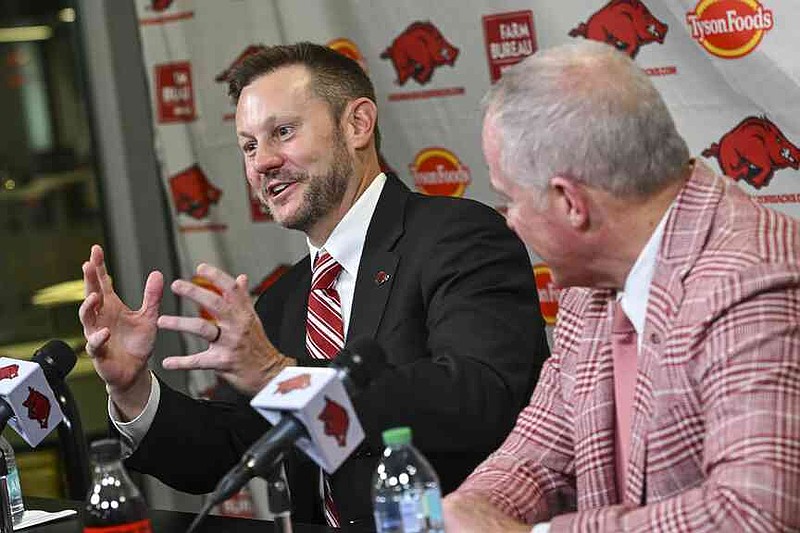
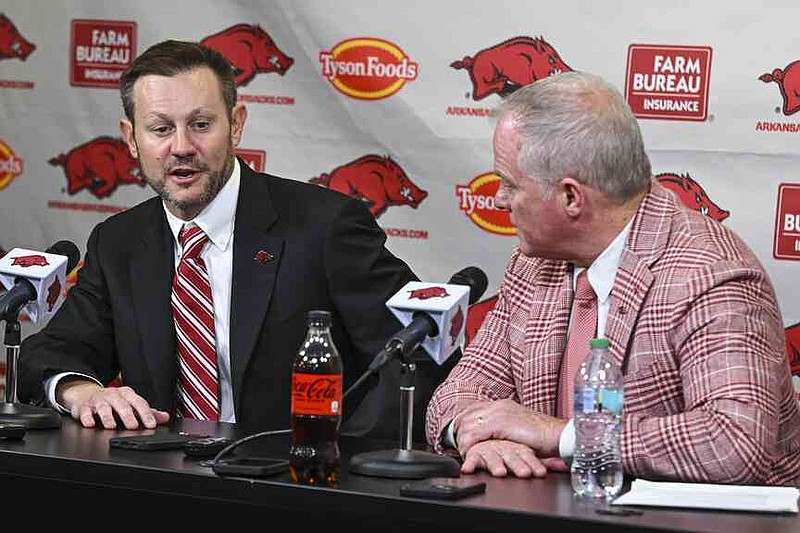
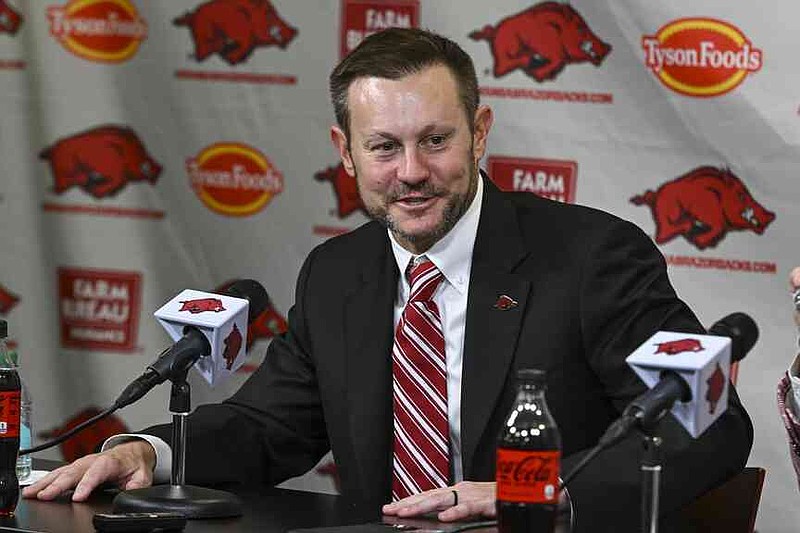
NIL
Colleges ponying up in support of football coaches, programs
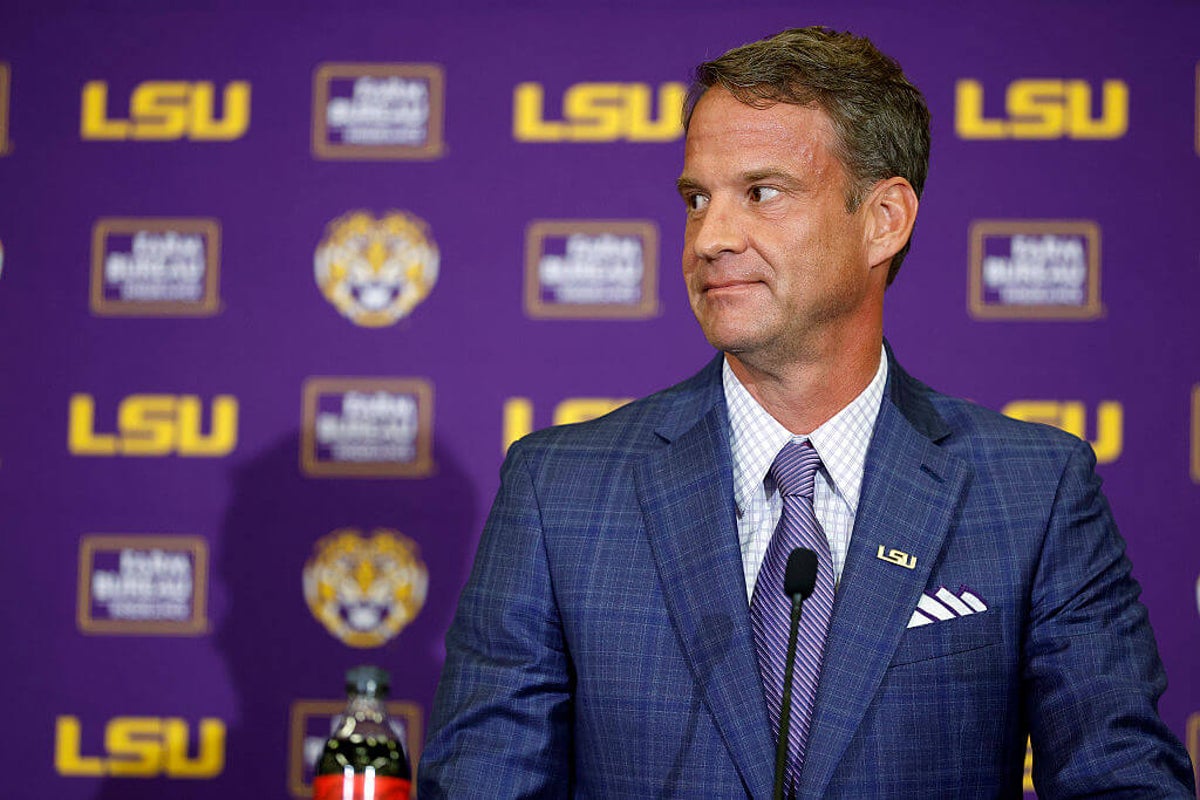
Ole Miss football is among the most well-supported programs in the country, backed by the Grove Collective, widely regarded as one of the nation’s most organized name, image and likeness groups.
It’s not LSU, though, and that, Lane Kiffin said, is one of the biggest reasons he left Oxford for Baton Rouge. LSU’s financial backing is among the best in the nation, and Kiffin said it played a major role in his decision to choose the Tigers.
“Tell me the numbers and the plan for what the money is for the players, because that’s everything in that area to me,” Kiffin said. “Not what I make — what they make, to understand how you can build this.”
LSU isn’t the only school promising its coaches the resources to build competitive rosters. Several programs — including Michigan State, Penn State, Arkansas and Auburn — have announced major financial commitments aimed at program-building.
At Michigan State, the school received a $401 million donation from Acrisure co-founder Greg Williams and his wife, Dawn, with $290 million earmarked for athletics. It is the largest gift in school history and better positions the Spartans to compete in college sports’ revenue-sharing era.
Newly hired coach Pat Fitzgerald, who dealt with limited NIL resources at Northwestern, will now have far more to work with as he tries to return Michigan State to Big Ten contention.
Matt Campbell named 17th head football coach at Penn State, pending board approval Monday. #WeAre https://t.co/BkWP7JhsJj
— Penn State Athletics (@GoPSUsports) December 6, 2025
Arkansas is also working to reshape its football budget. Athletic director Hunter Yurachek hired Ryan Silverfield as Razorbacks coach and vowed to elevate the school’s spending from near the bottom of the SEC to a more competitive level. At Silverfield’s introductory news conference, Yurachek acknowledged Arkansas’ investment had lagged behind the rest of the conference.
“The top-down alignment of a new financial commitment from our board of trustees, the university, the department of athletics and so many generous donors … was the first step to being all in on this goal,” Yurachek said. “This financial commitment will push us to the top half in key SEC items such as our assistant coaches’ pool, strength and conditioning staff, support staff pool, and our talent acquisition through revenue sharing and legitimate NIL.”
Another Big Ten program, Penn State, hired Matt Campbell from Iowa State to replace James Franklin. Since the hire, Penn State has reportedly committed around $30 million in NIL resources, according to reporter Matt Fortuna, on top of Campbell’s reported eight-year contract. That level of investment was hinted at after Penn State moved on from Franklin. Athletic director Pat Kraft made clear in October that the school intended to operate near the top of the national spending landscape.
“This is also about the modern era of college football,” Kraft said. “Our next coach needs to be able to maximize elite-level resources, attack the transfer portal and develop at the highest level.”
At Auburn, newly hired Alex Golesh said during his opening news conference that he will have “every resource known to man.” The Tigers’ administration believed former coach Hugh Freeze had strong enough support, but Auburn posted a 15-19 record during his tenure.
Even schools that aren’t changing coaches are investing more in their programs. Maryland athletic director Jim Smith reaffirmed the school’s commitment to Mike Locksley, promising to direct more resources into Locksley’s team.
“Coach Locksley, Senior Deputy Athletic Director Diana Sabau and I will review every aspect of our football program to make sure we are focused on getting the right type of resources in the right places to build a successful football program in this new era of college football,” Smith wrote in an online letter to fans.
This season, teams such as Vanderbilt, Virginia and Texas Tech have achieved success that outpaces their recent history. Revenue sharing and NIL commitments help make that more of a possibility.
The new wave of financial commitments around football programs introduces another layer to a coaching cliché. Coaches used to say, “It’s not the X’s and O’s, but the Jimmys and the Joes.” Now, more than ever, it’s about the Benjamins.
NIL
Chambliss adds AT&T NIL deal after strong season at Ole Miss – HottyToddy.com
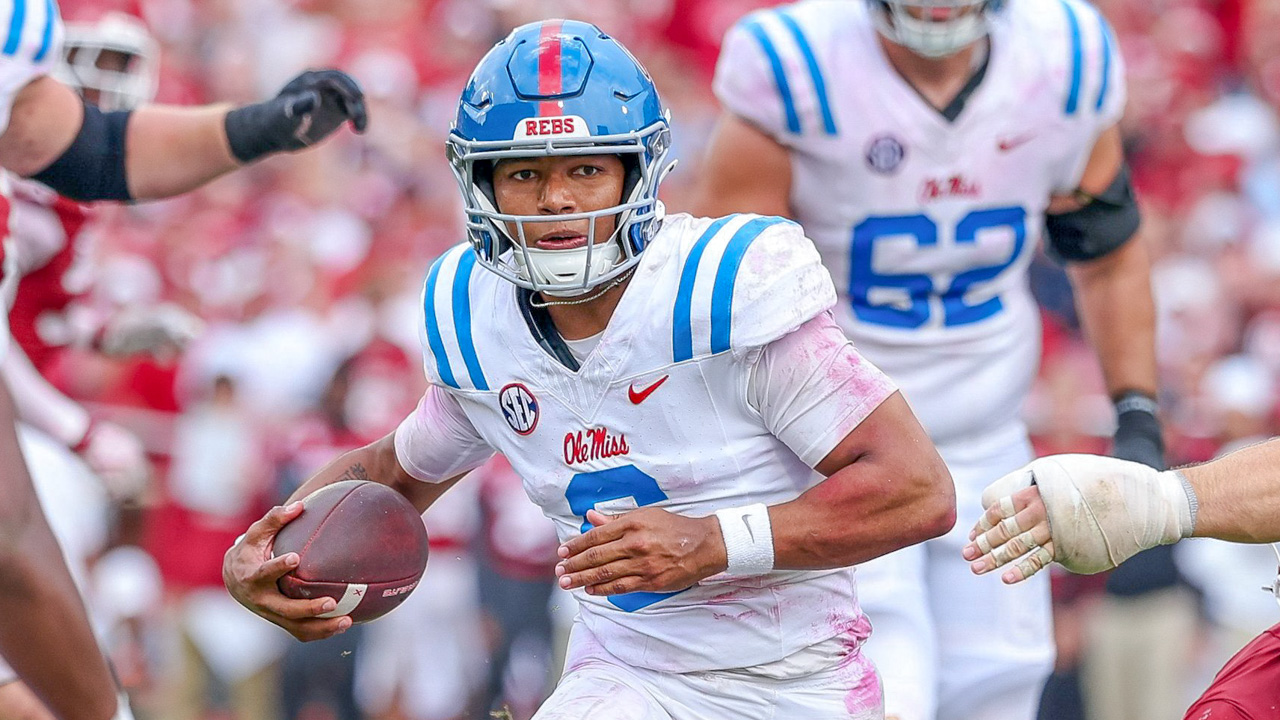
Trinidad Chambliss did not expect his season to unfold this way.
The Ole Miss quarterback arrived in Oxford as a transfer hoping to compete, learn, and settle into a steady role.
Instead, he finished the fall as a First-Team SEC selection and one of the most talked-about players in college football.
His latest news added another step to his rise, as Chambliss announced a major name, image, and likeness partnership with AT&T.
The deal was revealed through a national commercial that used humor and the language of the transfer portal.
In the ad, Chambliss sits in a living room with friends as they ask whether he plans to “transfer.”
After a pause, he answers, “If you wanna win, you go with the best.”
The twist — he is “transferring” to AT&T, not a new program. It was a simple message, delivered with ease and confidence, and it signaled how far his public profile has grown.
Chambliss admitted in the commercial that the moment still feels unusual.
He said he would have thought someone was “crazy” if they had predicted he would be in this type of spotlight. But his play changed everything, and his journey from Ferris State to Ole Miss became one of the most followed stories across the SEC.
His season took shape after starting quarterback Austin Simmons went down with an early injury. That opened the door for Chambliss to get his chance.
He quickly took hold of the job, lifted the offense, and kept the Rebels stable in a year when the margin for error was tight.
From the moment he stepped in, Chambliss brought command and mobility. His ability to run and throw gave Ole Miss a balanced attack that fit well with its personnel.
Over the final two months, he ranked among the league’s top quarterbacks and helped Ole Miss stay in the postseason race.
The Rebels believed they had solid depth entering the year, but Chambliss offered something more. He became the center of the team’s identity and one of the clearest examples of how the transfer portal can reshape a season.
Even Arkansas fans, watching as the Razorbacks navigated roster changes, saw how one player’s move could shift a program’s direction.
Heading into winter, Chambliss’ name carried weight both on and off the field, and companies noticed.
The AT&T deal became the latest sign his impact is reaching far beyond the box score.
Production places Chambliss among SEC’s best
Chambliss completed 218 of 333 passes for 3,016 yards, 18 touchdowns and three interceptions. His consistency helped Ole Miss settle into its offensive rhythm as the season progressed.
He also rushed 118 times for 470 yards and six touchdowns, finishing with 3,486 total yards.
His statistical rise showed how quickly he adapted to SEC play. For long stretches, he averaged more than 300 yards per game and kept drives alive with timely scrambles and smart reads.
Coaches praised his decision-making and his willingness to manage tough moments without forcing plays.
Chambliss often talked about the role his time at Ferris State played in shaping his mindset.
At the Division II level, he won awards and led a successful offense, but he believed taking a step to the SEC would show him a different level of competition. That belief proved correct, and he handled the transition with poise.
As Ole Miss piled up wins, attention grew. His leadership steadied the Rebels during close games, and fans responded to his calm presence. National media outlets highlighted his story, and discussions about his future expanded.
It was during that rise that NIL interest intensified.
The AT&T announcement confirmed the momentum. Though financial terms were not disclosed, the partnership showed that corporations now view college quarterbacks as voices capable of appealing to broad audiences.
It also reflected the changing nature of college football. NIL deals shape the landscape, and a player like Chambliss now balances his on-field duties with growing visibility off it.
Programs across the SEC, including the Hogs, track these developments closely. NIL structure affects recruiting, retention, and how players evaluate their opportunities.
Chambliss’ deal served as another example of how today’s game operates.
What comes next for Ole Miss quarterback
For the Rebels, the deal supports the program’s wider goals. Chambliss has become a central figure and a dependable leader for a team seeking long-term stability.
His growth reinforces what Ole Miss wants to build moving forward, both in recruiting and in performance.
Chambliss said the journey has been unpredictable but rewarding. He remains focused on his development as he balances new expectations and responsibilities. The next steps in his career will hold weight as Ole Miss prepares for its future on offense.
Key takeaways
-
Trinidad Chambliss secured a major NIL partnership with AT&T after a strong season at Ole Miss.
-
His rise from backup to First-Team SEC quarterback showed the power of the transfer portal.
-
The shifting NIL landscape, which affects programs like the Razorbacks, continues to reshape college football.
-

 Rec Sports2 weeks ago
Rec Sports2 weeks agoFirst Tee Winter Registration is open
-

 Rec Sports2 weeks ago
Rec Sports2 weeks agoFargo girl, 13, dies after collapsing during school basketball game – Grand Forks Herald
-

 Motorsports2 weeks ago
Motorsports2 weeks agoCPG Brands Like Allegra Are Betting on F1 for the First Time
-
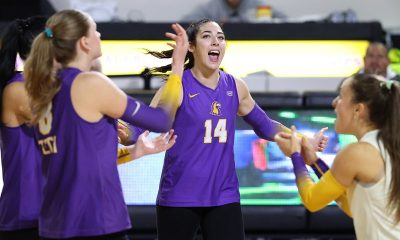
 Sports3 weeks ago
Sports3 weeks agoVolleyball Recaps – November 18
-

 Motorsports2 weeks ago
Motorsports2 weeks agoF1 Las Vegas: Verstappen win, Norris and Piastri DQ tighten 2025 title fight
-
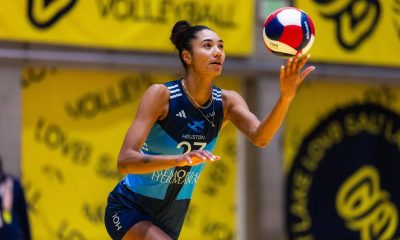
 Sports2 weeks ago
Sports2 weeks agoTwo Pro Volleyball Leagues Serve Up Plans for Minnesota Teams
-
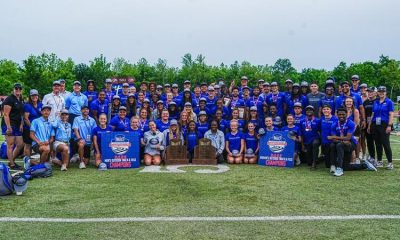
 Sports2 weeks ago
Sports2 weeks agoSycamores unveil 2026 track and field schedule
-

 Sports2 weeks ago
Sports2 weeks agoUtah State Announces 2025-26 Indoor Track & Field Schedule
-

 Motorsports1 week ago
Motorsports1 week agoRedemption Means First Pro Stock World Championship for Dallas Glenn
-

 NIL7 days ago
NIL7 days agoBowl Projections: ESPN predicts 12-team College Football Playoff bracket, full bowl slate after Week 14




